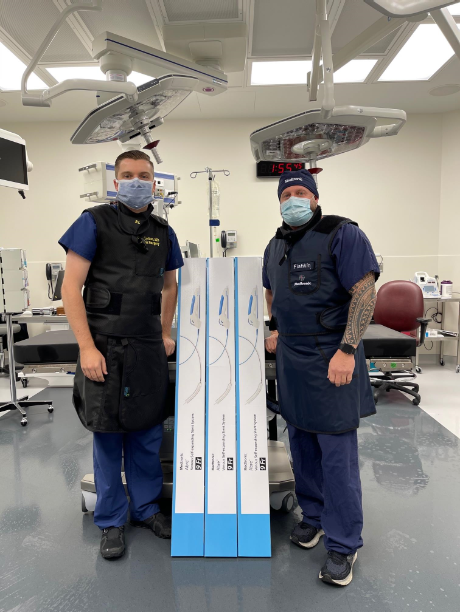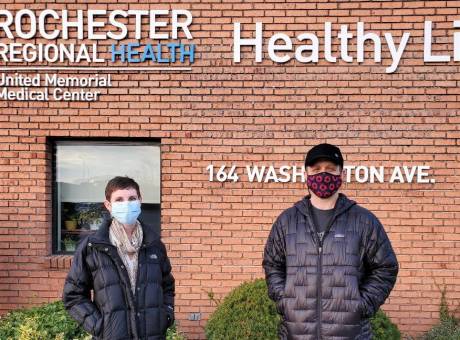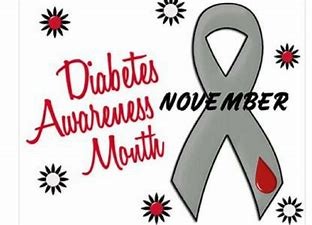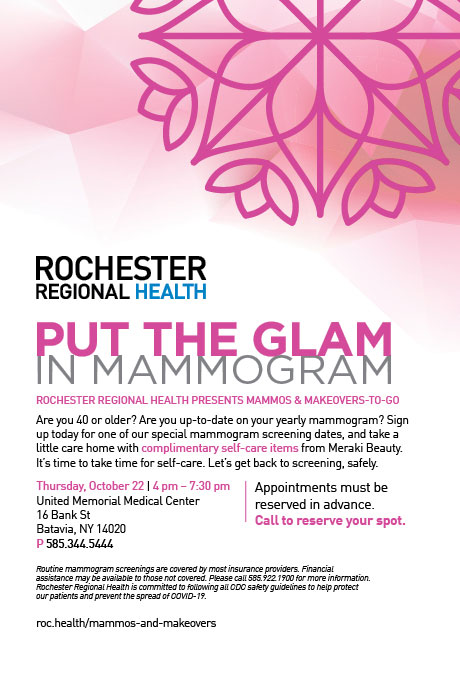Being a “numbers person,” when some key figures indicating the status of his health didn’t add up, Chris Ace sprang into action.
In August, the 49-year-old Batavian was losing weight and was extremely thirsty. Although he hadn’t paid a visit to the doctor’s office in about eight years, he felt he needed to call his primary physician – Dr. Suwarna Naik – and find out what was going on.
“I wanted to do whatever I had to do immediately to correct the problem,” said Ace, a process engineer at Chapin International Inc. “The way I was eating, I had no business losing weight and although it was in the summer, I was really, really thirsty – drinking a ton of water.”
Ace said he did some research online and figured his symptoms were related to either diabetes or a thyroid problem, leaning more toward the former. When his blood sugar count was determined to be 476 and his A1C level came in at 12.1 (Glycated Hemoglobin Test), he knew things had gone haywire.
The very next day, Ace found himself taking part in a one-to-one consultation with Amy Miller, registered dietitian and certified diabetes educator for United Memorial Medical Center's Health Living department.
“A normal blood sugar reading, according to the American Diabetes Association, is 80 to 130 – that’s fasting, before meals,” Miller said, “and the A1C ranges are 4 to 5.6, normal; 5.7 to 6.4, pre-diabetes, and 6.5 or more, diagnosis of diabetes.”
Without question, Ace’s numbers were in the danger zone, with the readings combining to put his average blood sugar level for three months at 300.
Ace’s condition – Type 2 diabetes -- was not a result of being extremely overweight; it was more about the amount of carbohydrates that he was consuming on a regular basis.
“I ate two good meals a day, breakfast -- usually fruit and yogurt -- and a salad for lunch, but I went off the rails at night, figuring that since I ate healthy meals during the day, I would be OK,” he said. “My wife, Lisa, and I would go out for ice cream and, since she is such a great baker, I was eating a lot of sweets. And I love chocolate.”
He said that learning about the disease from Miller and attending three of the department’s Living Healthy With Diabetes classes in September have made all the difference in the world as he now has his blood sugar in check and his A1C down to 5.6.
"I thought that I wouldn't like sitting through two-and-a-half-hour classes, but it went by just like that," he said. "I learned so much from Amy."
In fact, Ace could be considered a “poster child” for diabetes awareness through his motivation, record-keeping and diligence, Miller said.
Fittingly, November is National Diabetes Awareness Month, an annual event to inform the public of the risk factors, symptoms, types of diabetes and steps that can be taken to keep things under control.
As it stands, more than 30 million people in the United States have some form of diabetes and one in four don’t realize they have it.
“Chris came in with materials from his primary care physician and a list of questions during our first meeting, and he was very motivated,” Miller said. “The numbers really work for him. After showing him the numbers, he latched onto those numbers and went with it. He executed what needed to be done and implemented those changes.”
Miller and Jill Pickard, a registered nurse and certified diabetes educator, teach the Living Healthy with Diabetes course, a four-part ADA-accredited* series that covers facts about the disease, testing, carb counting and medications/complications.
The classes are scheduled on Thursdays at various times each month at the Healthy Living office at 164 Washington Ave. Most insurance plans cover the sessions, Miller noted.
Ace said he learned that the “biggest component is knowing how to eat.”
“Anytime I heard the word diabetes, I thought of sugar, sugar, sugar,” he said. “You can eat sugar. It’s all about counting the carbs. That’s the way to control my blood sugar.”
Miller said there is no such thing as a “diabetic diet.”
“We use the meal planning method – carb counting,” she said. “There is no right or wrong way. It’s about balancing the diet with adequate nutrition, including all of the food groups, with special attention to carbohydrate intake. It’s important to eliminate excess sugary foods like candy bars and sweets, and make healthy food choices.”
Miller said she uses the BMI (Body Mass Index) chart to determine a person’s target weight, based on his or her height.
Both Ace and Miller see his story as a cautionary tale to others with diabetes or experiencing similar symptoms.
“Chris’s story is very empowering for others,” Miller said. “Diabetes doesn’t take a break. It’s a constant and it can really wear on people, and can cause depression.”
Ace’s advice is to the point: “People should go to the doctor. Don’t put it off like I did.”
In fact, Ace, who is utilizing a special app to count his daily carbs, has become an unofficial spokesperson for Healthy Living.
“When I told a coworker about my diabetes and what I am doing now, he said, ‘You’re always eating a healthy lunch, and you have it?’ ”
Soon after, that coworker had made an appointment to see his doctor.
*ADA: American Diabetes Assocation.
-------------
For more information about UMMC’s Healthy Living department and the Living Healthy With Diabetes program, call (585) 344-5331.
Photo: Amy Miller and Chris Ace outside the UMMC Healthy Living office. Photo by Mike Pettinella.








